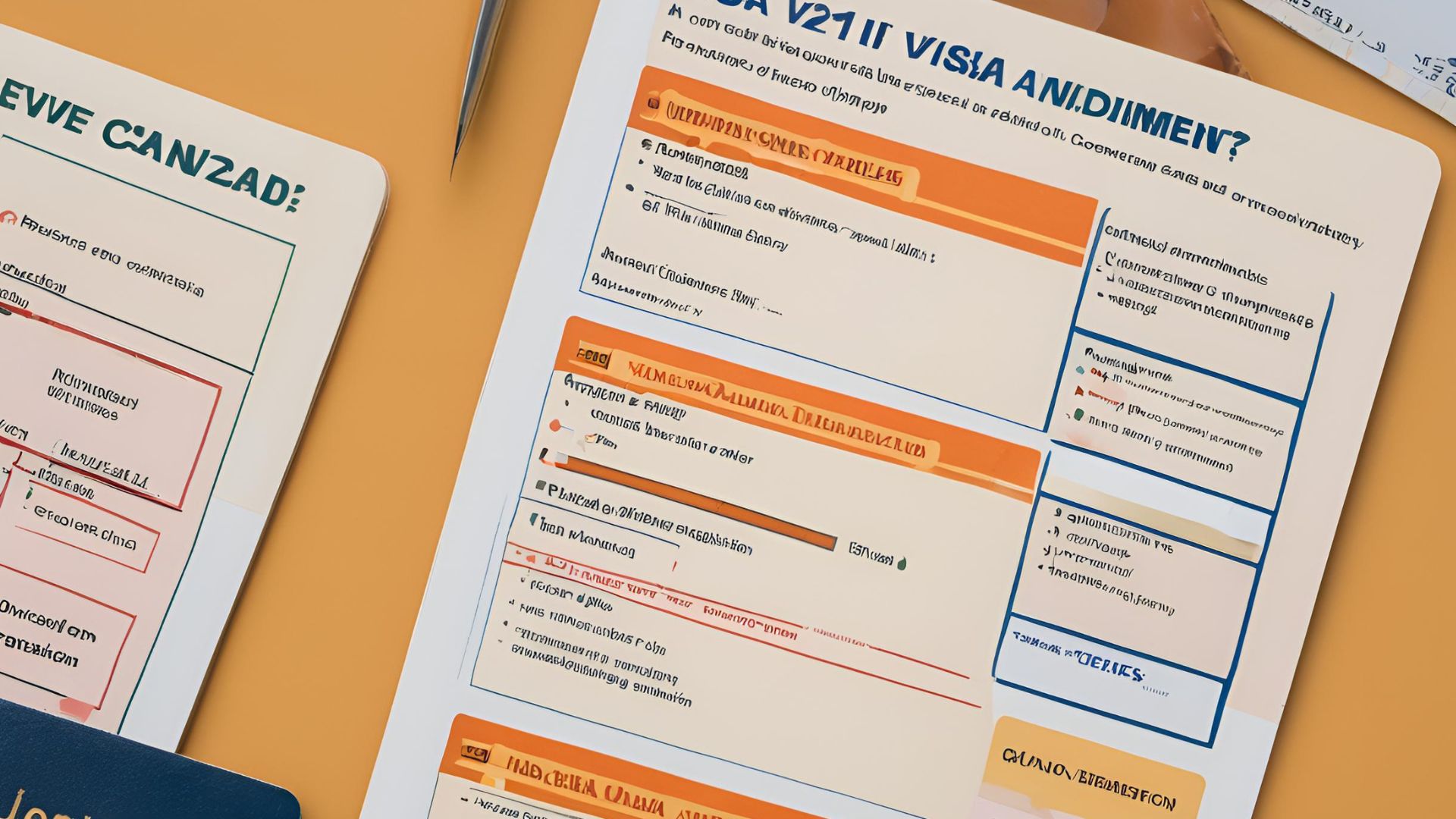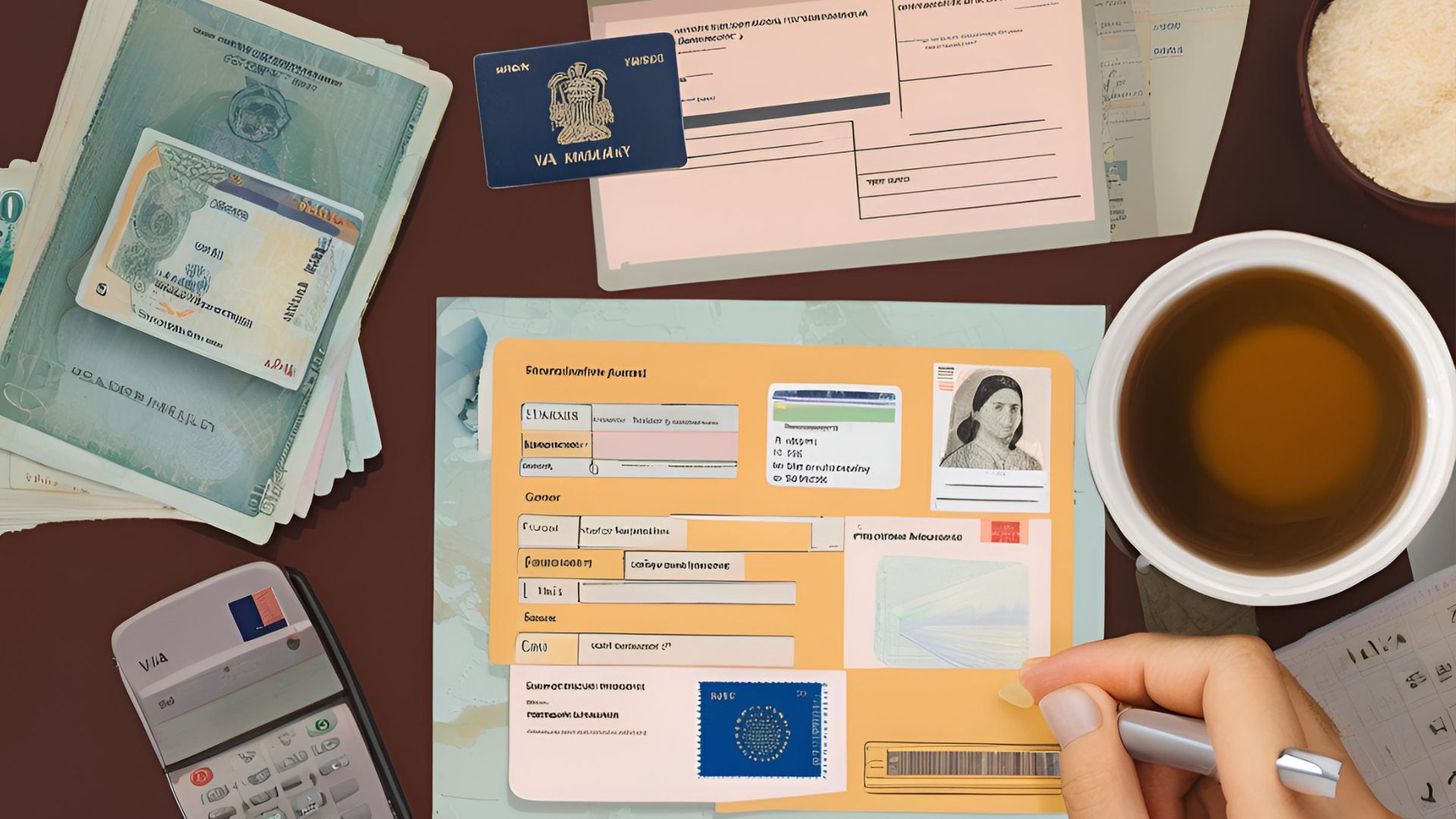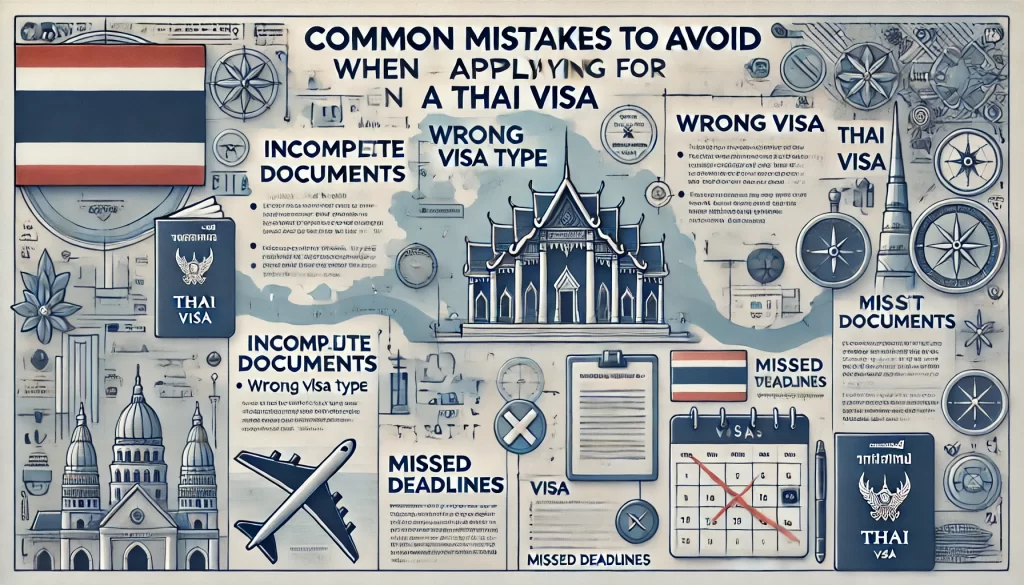Have you ever dreamed of exploring the vibrant streets of Bangkok, lounging on the pristine beaches of Phuket, or immersing yourself in the rich culture of Chiang Mai? 🌴🇹🇭 Thailand’s allure is undeniable, but there’s one potential roadblock that can turn your dream vacation into a nightmare: visa application mistakes.
Every year, countless travelers face disappointment and stress due to avoidable errors in their Thai visa applications. From misunderstanding complex requirements to overlooking crucial details, these missteps can lead to rejected applications, delayed travel plans, and unnecessary expenses. But don’t worry! We’re here to guide you through the potential pitfalls and ensure your journey to the Land of Smiles begins with, well, a smile. 😊
In this comprehensive guide, we’ll explore the most common mistakes applicants make when applying for a Thai visa. We’ll cover everything from understanding visa requirements and avoiding documentation errors to perfecting your application photos and mastering the art of timing and planning. So, fasten your seatbelts as we embark on a journey to make your Thai visa application process as smooth as a Thai silk scarf!
Understanding Visa Requirements

A. Choosing the wrong visa type
One of the most critical steps in applying for a Thai visa is selecting the appropriate visa type. Many applicants make the mistake of choosing a visa that doesn’t align with their purpose of visit or intended activities in Thailand. Here’s a comparison of common visa types:
| Visa Type | Purpose | Duration |
|---|---|---|
| Tourist Visa | Leisure travel | 60 days (extendable) |
| Non-Immigrant B Visa | Business or work | 90 days to 1 year |
| Education Visa | Study or research | 90 days (extendable) |
| Retirement Visa | Long-term stay for retirees | 1 year (renewable) |
Always research thoroughly and consult official sources to ensure you apply for the correct visa type.
B. Overlooking visa validity periods
Another common mistake is failing to consider the visa’s validity period. Key points to remember:
- Check the entry window (time allowed to enter Thailand after visa issuance)
- Note the permitted length of stay
- Be aware of extension possibilities and requirements
C. Ignoring financial requirements
Many applicants overlook the importance of meeting financial criteria. Thai authorities often require proof of sufficient funds to support your stay. This may include:
- Bank statements
- Proof of employment and income
- Sponsorship letters (if applicable)
D. Neglecting health insurance requirements
Recent changes in Thai visa policies have made health insurance mandatory for certain visa types. Ensure you:
- Obtain appropriate coverage for your entire stay
- Choose a policy that meets the minimum requirements set by Thai authorities
- Keep documentation of your insurance readily available
Understanding these requirements thoroughly will significantly improve your chances of a successful visa application. Next, we’ll explore common documentation errors that can lead to visa rejections.
Documentation Errors

A. Submitting incomplete application forms
One of the most common pitfalls in Thai visa applications is submitting incomplete forms. Ensure every field is filled out accurately and completely. Pay special attention to:
- Personal information
- Passport details
- Purpose of visit
- Intended length of stay
| Common Mistakes | How to Avoid |
|---|---|
| Leaving fields blank | Double-check every section |
| Providing unclear answers | Be specific and concise |
| Inconsistent information | Cross-reference with other documents |
B. Providing outdated or invalid documents
Expired or outdated documents can lead to immediate rejection. Always check:
- Passport validity (at least 6 months beyond intended stay)
- Recent bank statements (usually within the last 3 months)
- Current employment letter
- Up-to-date medical certificates
C. Failing to translate documents properly
All non-English documents must be professionally translated. Common translation errors include:
- Using online translation tools
- Relying on non-certified translators
- Forgetting to translate supporting documents
D. Forgetting to sign all required forms
Each form requires your signature. Create a checklist to ensure you’ve signed:
- Visa application form
- Financial declaration
- Health insurance confirmation
- Any additional affidavits or declarations
E. Not making copies of important documents
Always make copies of your application package. This helps in case of:
- Lost documents during processing
- Need for quick reference
- Reapplication if necessary
With these common documentation errors in mind, let’s explore another critical aspect of your visa application: the often-overlooked photo requirements.
Photo Mistakes

Using incorrect photo dimensions
When applying for a Thai visa, one of the most common photo mistakes is using incorrect dimensions. The Thai embassy has specific requirements for visa photo sizes, typically 3.5 x 4.5 cm. Using photos that don’t meet these dimensions can lead to your application being rejected.
| Correct Dimensions | Common Mistakes |
|---|---|
| 3.5 x 4.5 cm | Too small or large |
| 35 x 45 mm | Square photos |
| 1.38 x 1.77 inches | Irregular shapes |
Submitting low-quality or blurry photos
Another frequent error is submitting low-quality or blurry photos. Your visa photo should be:
- Clear and in focus
- Well-lit with even lighting
- Taken against a plain, light-colored background
- Recent (taken within the last 6 months)
Low-quality photos can result in application delays or rejections, costing you time and money.
Wearing inappropriate attire in photos
The clothing you wear in your visa photo is crucial. Inappropriate attire can lead to your application being denied. Here are some guidelines:
- Wear neutral, solid-colored clothing
- Avoid white tops that may blend with the background
- Don’t wear sunglasses or tinted glasses
- Remove hats or head coverings (unless for religious reasons)
Remember, your visa photo is your first impression on Thai immigration officials. Ensuring it meets all requirements will significantly improve your chances of a successful application.
Timing and Planning Issues
A. Applying too late or too early
Timing is crucial when applying for a Thai visa. Applying too late can lead to rushed decisions and incomplete applications, while applying too early might result in an expired visa before your trip begins. To strike the right balance:
- Apply 2-3 months before your intended travel date
- Check the specific visa type’s validity period
- Consider any seasonal delays during peak travel times
B. Underestimating processing times
Processing times for Thai visas can vary significantly depending on the type of visa and current workload. To avoid disappointment:
| Visa Type | Typical Processing Time |
|---|---|
| Tourist | 3-5 business days |
| Business | 5-7 business days |
| Education | 7-10 business days |
Always add a buffer of at least 1-2 weeks to these estimates to account for unexpected delays.
C. Failing to schedule necessary appointments
Some visa applications require in-person interviews or biometric data collection. Common appointment-related mistakes include:
- Not booking appointments far enough in advance
- Missing scheduled appointments
- Arriving unprepared for the appointment
To avoid these issues, schedule appointments as soon as you start your visa application process and prepare all necessary documents beforehand.
D. Not allowing for potential delays
Various factors can cause delays in the visa application process:
- Public holidays in Thailand or your home country
- Technical issues with online application systems
- Additional document requests from the embassy
- Unexpected closures or reduced staffing at consulates
To mitigate these risks, start your application process early and maintain open communication with the Thai embassy or consulate. By anticipating potential delays, you can ensure a smoother visa application experience and avoid last-minute stress.
Common Oversights

A. Neglecting to check passport validity
One of the most critical oversights when applying for a Thai visa is failing to verify your passport’s validity. Many travelers are unaware that Thailand requires passports to be valid for at least six months beyond the intended stay. This oversight can lead to visa rejection or even denied entry at the border.
| Passport Validity Requirements |
|---|
| Minimum 6 months beyond stay |
| Valid for entire visa duration |
| At least 2 blank pages |
B. Forgetting to provide proof of onward travel
Another common mistake is neglecting to provide proof of onward travel. Thai immigration officials often require evidence that you plan to leave the country before your visa expires. This can be in the form of:
- A return flight ticket
- An onward flight to another country
- A bus or train ticket out of Thailand
C. Overlooking visa fee payment requirements
Many applicants forget about or misunderstand the visa fee payment process. Each visa type has specific fee requirements, and failing to pay the correct amount or using the wrong payment method can delay your application or result in rejection.
D. Failing to meet minimum stay requirements
Some visa types have minimum stay requirements that travelers often overlook. For instance, certain non-immigrant visas require you to stay in Thailand for a specific period before you can leave the country. Ignoring these requirements can lead to visa cancellation or future entry difficulties.
Now that we’ve covered these common oversights, let’s explore some communication and follow-up errors that can also impact your Thai visa application process.
Communication and Follow-up Errors

Not responding to embassy inquiries promptly
When applying for a Thai visa, timely communication with the embassy is crucial. Failing to respond promptly to inquiries can lead to significant delays or even rejection of your application. Here are some key points to consider:
- Set up email notifications for embassy communications
- Check your spam folder regularly
- Respond within 24-48 hours to any embassy inquiries
- Be concise and clear in your responses
Providing incorrect contact information
One of the most common yet easily avoidable mistakes is submitting incorrect contact details. This oversight can have serious consequences:
| Consequence | Impact |
|---|---|
| Missed updates | Delayed application process |
| Unable to receive important documents | Potential visa denial |
| Difficulty in scheduling interviews | Missed opportunities |
To avoid these issues:
- Double-check all contact information before submission
- Include both primary and secondary contact methods
- Update the embassy if your contact details change during the application process
Failing to track application status
Staying informed about your visa application status is essential. Many applicants overlook this step, leading to unnecessary stress and potential complications. To effectively track your application:
- Use the official Thai visa application tracking system
- Keep your application reference number handy
- Set reminders to check the status regularly
- Follow up with the embassy if there are no updates for an extended period
By avoiding these communication and follow-up errors, you’ll significantly improve your chances of a smooth Thai visa application process. Remember, proactive communication and diligent tracking are key to successfully navigating the visa application journey.
Navigating the Thai visa application process can be complex, but avoiding these common pitfalls can significantly increase your chances of success. By thoroughly understanding the visa requirements, meticulously preparing your documentation, and submitting appropriate photos, you’ll be well on your way to a smooth application process. Proper timing, attention to detail, and effective communication with the relevant authorities are equally crucial elements.
Remember, a successful Thai visa application is all about preparation and precision. Take the time to double-check every aspect of your application, from the smallest details to the bigger picture. By steering clear of these common mistakes, you’ll not only save time and frustration but also increase your likelihood of a positive outcome. Whether you’re planning a short visit or a long-term stay in Thailand, a well-executed visa application is your first step towards an unforgettable experience in the Land of Smiles.

